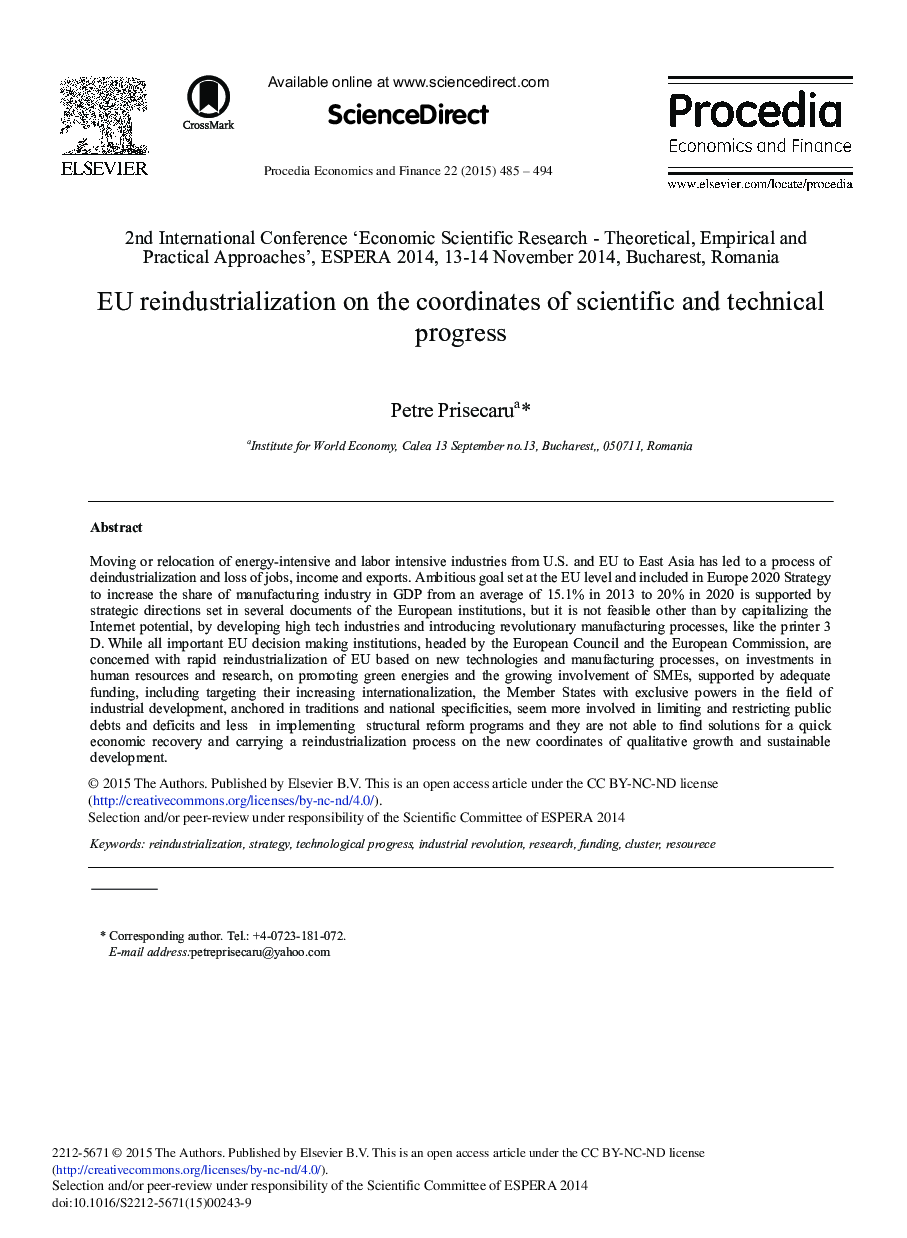| Article ID | Journal | Published Year | Pages | File Type |
|---|---|---|---|---|
| 979997 | Procedia Economics and Finance | 2015 | 10 Pages |
Moving or relocation of energy-intensive and labor intensive industries from U.S. and EU to East Asia has led to a process of deindustrialization and loss of jobs, income and exports. Ambitious goal set at the EU level and included in Europe 2020 Strategy to increase the share of manufacturing industry in GDP from an average of 15.1% in 2013 to 20% in 2020 is supported by strategic directions set in several documents of the European institutions, but it is not feasible other than by capitalizing the Internet potential, by developing high tech industries and introducing revolutionary manufacturing processes, like the printer 3 D. While all important EU decision making institutions, headed by the European Council and the European Commission, are concerned with rapid reindustrialization of EU based on new technologies and manufacturing processes, on investments in human resources and research, on promoting green energies and the growing involvement of SMEs, supported by adequate funding, including targeting their increasing internationalization, the Member States with exclusive powers in the field of industrial development, anchored in traditions and national specificities, seem more involved in limiting and restricting public debts and deficits and less in implementing structural reform programs and they are not able to find solutions for a quick economic recovery and carrying a reindustrialization process on the new coordinates of qualitative growth and sustainable development.
